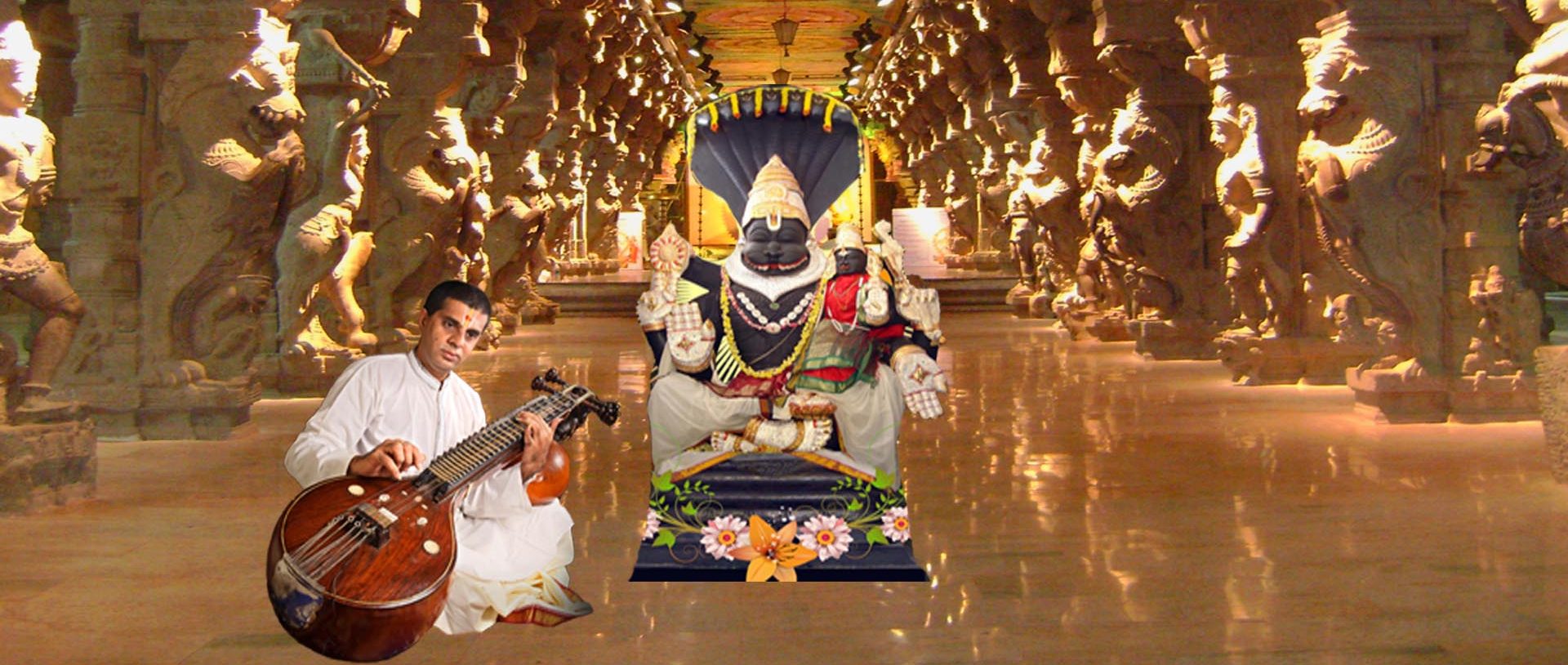Tanam is the most attractive and important item, especially in Veena. It is Madhyamakala raga alapana with varieties of rhythmic flow at medium speed.
The phrases used are ANANTA AND TAANAMTA for the elaboration of ragam. The word TAANAM originated from the word TENNA. Ananta is nothing but the name of the god it is the reverse of God’s name just like Mara Mara of Valmiki turned to be Rama Rama. South Indian Pandya kings were praised by their court musicians for using the word ‘Tenna Tenna’ in their concerts. Ghana raga taanam is an important item played in Veena.
I. The First Ghana Raga Panchakam: Nata, Gaula, Aarabhi, Varaali, and Sri Raga.
II. The Second Ghana Raga Panchakam: Reethi Goula, Bhouli, Narayana Goula, Saaranga Naata and Kedara. Dr. Nookala feels that Taanam has come to vocal from Veena only. Raagalapana has laya, similarly tanam too has laya and is laya pradhanam.
In playing taanam the work of the right-hand fingers and the technique play a very important role.
To play taanam, separate strokes are there for the 2nd, 3rd, 5th, 7th, and 9th letters. Lo Meetu and Side Meetu should not come together.” If they come simultaneously it will sound like JHAALA on Sitar (Hindustani Music). But in the present days, it is in practice. Just as ragalapana has a systematic pattern tanam also has a pattern.
- While playing tanam prasthara should be done on the Jiva Swara of that particular raga.
- The Graha and Nyasa swaraas of the raga should be kept in mind while doing taana prasthara. So Raga Lakshana should be known or followed.
- Sancharam should start from Mandara Sthayi and proceed to the Madhyama Sthayi, do the sancharas on the Jeeva swaras and raga chaya swaras only, and then proceed to the Tara Sthayi.
- Even at the Tara Sthayi sancharas should be done on the jiva swaras and then slowly come down in avarohana order and complete the tanam.
- From the beginning to the end the tanam should be with equal talent, raga bhava, and attraction (rakti).
- Raga bhava should not be lost till the completion. Tanam has been divided into many varieties and separate names have also been given. According to some, there are 8 varieties of tanam namely:
- Maanava Tanam 2. Ashwa Tanam 3. Gaja 4. Markata 5. Mayoora 6. Kukkuta 7. Mandooka and 8. Chakra tanam.
Except for Chakra tanam, there is no idea as to why the other names have been given. Some feel that the sancharas resemble the walk of the animals or birds named after.
Another set of names are: - 1. Chakra Tanam 2. Vakra Tanam 3. Misra Tanam 4. Gambheera Tanam 5. Maalika Tanam 6. Vidyut tanam (“VEENA” – By G.N. Balasubramanyam).
- Chakra Tanam: Sa ga ma – ga ma pa -Pa da ni – da ni saga ma padapa – ma padanidaPa da ni sa niThe swaras are grouped in the form of Chakra.
- Vakra Tanam: The Sancharas in this are Vakra. Sa ga – Sa ma ri pa – Ma ni – Sa da – in pa – ni Ma – Pa ri – ga ri.
- Misra Tanam: Mixing of 1, 2, 3, 4, 5, 6, 7 swaras or notes. Pa – da pa – ri da pa – pa da pa pa – Pa da pa pa ma – Ma ga ma ma ri sa – Sa ri ga ma pa da ni –
- Gambheera Tanam: Playing on the Mandra Sthayi. Ss – Sa ni sa – Pa Pa Sa – Sa Sa Sa
- Malika Tanam: Tanam played in various ragaas, one after another.
- Viddyuttaanam: Playing tanam in Dhruta Kalam (third speed).Bharata has stated 84 varieties of tanam. It is doubtful whether they are the ones, which are in practice today.
Two more varieties are described:
- Suddha Tanam and 2. Koota Tanam.
Tanam played in Melakarta and Upanga ragas is known as Suddha Tanam and tanam played in bhashanga ragas is known as Koota Tanam. In the book Veena of Govinda Deekshit, it is said that if Sapta swaras are played in Vakra Sanchara it is called koota taanam and if only 2, 3, 4, 5, and 6 swaras are combined and played it is a sampoorna tanam.

